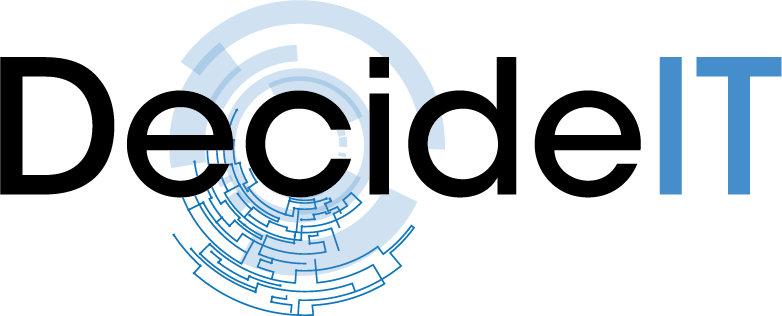DecideIT – an overview
For analysis of decision situations with many criteria, uncertainty and risk.
DecideIT provides both quantitative and qualitative modeling in the same framework.
DecideIT based on research in operations research, mathematics, computer science, philosophy, business administration and organizational theory.
Protected by US Patent # 7,257,566.

DecideIT is a world leading tool for:
· Investment
· Purchasing Decisions
· Procurement
· Planning Decisions
· Risk management
· And many other decision-situations
In short
- Handles imprecise probabilities, values, weights, as well as comparative relations between variables. This is actually the only real difference compared to other decision tools, but is of utmost importance in terms of usability.
- Such advanced handling of vague information (”Uncertainty”), in the form of interval and comparisons makes a big difference when it comes to converting reality to model.
- Often vague information is enough to clarify the best alternative, and if not DecideIT helps the decision maker to fins weaknesses in the decision material.
- The interaction with the tool is facilitated by the handling of uncertain information.
- Different perspectives/attributes/criteria, such as e.g. financial, environmental, psychological or social aspects can be handled in more logical ways.
- Is built on decades of research within decision theory and mathematics.
- Patented algorithms.
- Fast calculations.
Use of DecideIT
More or less all types of strategic decisions with several alternatives have to be considered, but in particular when:
- serious consequences need to be avoided
- there is uncertainty involved
- there are several criteria in conflict with each other
- it is important to further enlighten and structure the decision problem to be able to get professional opinions or in any way create a transparent decision
Result
Decreases the leas time from problem to action.
Investors


Preference AB | Copyright 2018 © | Privacy Policy

